
Greek Islands
Zakynthos(Zante)
Zakynthos(Zante)

ZAKYNTHOS by Nick EdwardsMy first visit to Zakynthos in 1984 was not my own doing at
all. I was teaching English in Athens and an old school friend who was
doing nicely in business sent me a plane ticket to join him and his wife
in the then fledgeling resort of Laganas for a couple of nights. The
current excesses of the resort were not in evidence but I do recall my
surprise when the horiatiki salad came without any olive oil on it and
it was an equal shock to the waiter when I pithily enquired in Greek as
to where the dressing was. Yet when Pete rented a car and we headed for
the hills I could sense there was more to the island than met the eye. |
|
|
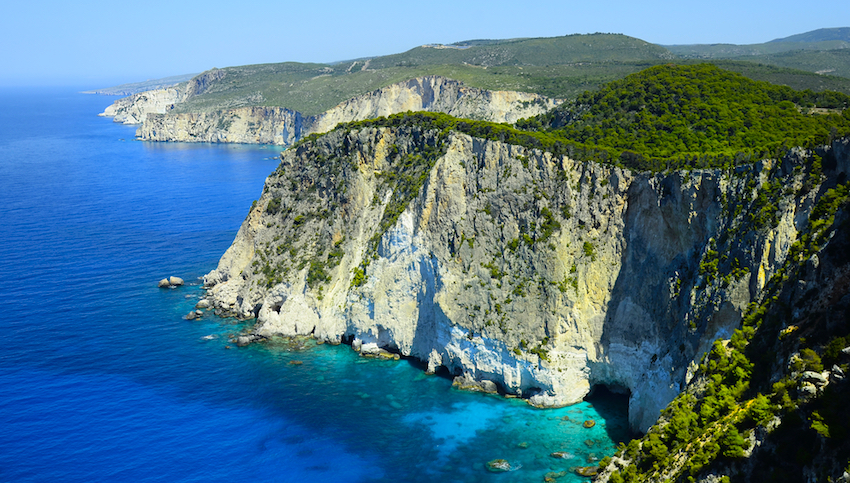 |
|
The island was originally settled by Achaeans from the mainland in prehistory and earned a brief mention in Homer's Odyssey as "wooded Zakynthos", an apt description still today, as it shares the common Ionian characteristic of greenery. In ancient times it was ruled by whoever held the upper hand in Greece itself, from the Athenians and Spartans through the Macedonians and Romans to the Byzantine Empire. Subsequently, along with the rest of the Ionians, its history diverged from the rest of Greece, first being handed round a succession of Italian rulers before the Venetians saved the region from the lengthy Turkish occupation suffered by the rest of the country and established a dynasty on Zakynthos from 1485. The names of the governing nobility were recorded in the legendary Libro d'Oro, hated by the impoverished locals and eventually incinerated when the French took over in 1797. Following a brief spell under a Turko-Russian alliance and the French again, Zakynthos spent its last fifty-five years under colonial rule as a British protectorate before being reunified with Greece in 1864. |
|
|
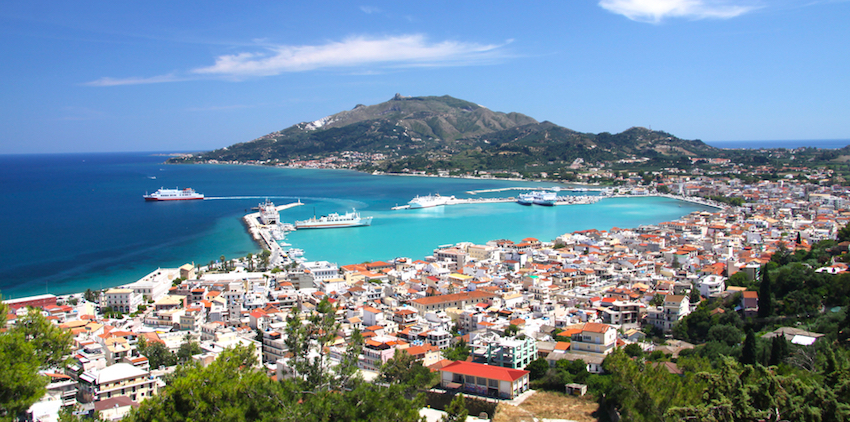 |
|
Zakynthos Town |
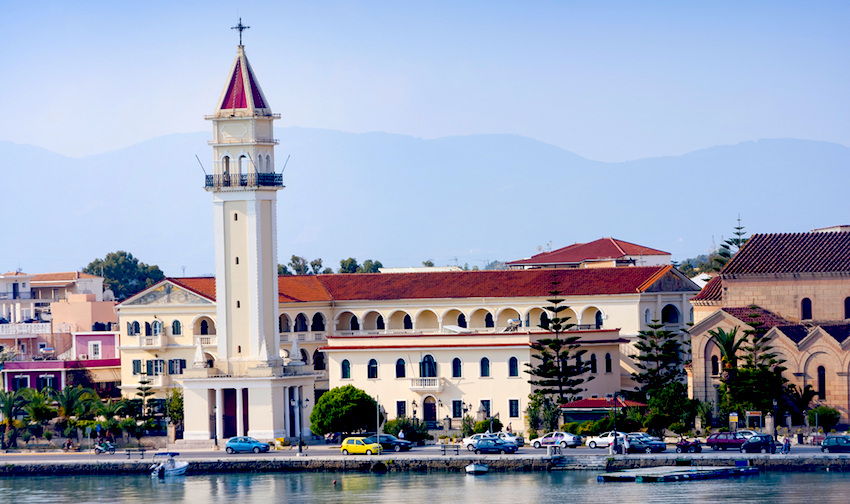 |
|
Just inland from Agios Nikolaos tou Molou, the huge square of Agios Dionysios is dominated by the island's unmissable Byzantine Museum, now known as the Museum of Zakynthos, at the rear end: as well as containing some important works of iconography by members of the Ionian School of Painting and fantastic murals from Agios Andreas church in Volimes, perhaps the most moving exhibit is the pre-quake model of the town. Towards the sea, an attractive statue of Eleftheria (the island's very own Statue of Liberty) is inscribed with a stanza from Solomos' Hymn to Liberty. The back end of the square leads onto a smaller platia named after Agios Markos, surrounded by cafes and restaurants and home to the pleasant Solomos Museum, dedicated to its namesake and other prominent Zakynthians. |
|
Other attractions include
the quiet Repara district north of Agiou Markou Square but don't let the
signs to the town beach get your hopes up - it's a pretty dull patch of
stony sand. Towering two kilometres above the town is the suburb of
Bohali, where you can visit the sturdy remains of the castle and enjoy
brilliant views across the concrete jungle and bay to the outline of the
Vassilikos Peninsula. |
|
|
|
Touristic Zakynthos It would
be unkind but not entirely untrue to say that over-the-top tourism
spreads like a cancer in all coastal directions from Zakynthos Town,
although the patient seems to have survived being killed by it, largely
thanks to the intervention of geography. Heading south from the capital
along the coast, the first resort you come to is unprepossessing
Argassi, whose beach is a stringy affair and the whole place is better
avoided, unless you want to frequent the massive clubs that have parked
their Hollywood-style facades along the approach road. |
|
|
|
Heading southwest from the capital on the airport road brings you
first to the turning for the relatively laid back resort of Kalamaki,
the first settlement on the main stretch of Laganas Bay. The beach here
is wide, sandy and surprisingly uncrowded, as most of the action lies
almost a kilometre back in the centre. From the busy crossroads it's
a straight run of under 4pm into the heart of darkness, sorry, Laganas.
Despite the general slump in tourism, this is still prime Club 18-30
territory, although I suspect there are precious few visitors who belong
to the final ten years of that dozen. Gaggles of girls and bands of
randy boys, almost exclusively Brits, flirtatiously egg each other on to
greater excesses as the night wears on and pack into clubs such as Bad
Boys, Zeros and Rescue but if you do venture here at night you'll
probably feel like being rescued without entering one of the dens. There
is an uneasy tension with the locals, which occasionally spills over
into violence, most notoriously when a young taxi driver took exception
to having a laser pen directed at him in July 2011 and stabbed five
English lads, one fatally. In the normal run of things, the place is not
dangerous at all, of course, just unbelievably tacky. The restaurants
are all of the plastic chips type, one noble exception being Sarakina,
2km inland, which provides a free shuttle to encourage young punters to
sample its quality cuisine and nightly kantades. |
|
|
|
On the opposite, north side of Zakynthos Town, it is barely 4km to the conjoined resort of Tsilivi and Planos. If you can work out where one ends and the other ends, you deserve a prize. The truth is there's nothing much to write home about in either of them but they do form the gateway to some pleasant little beaches just to the north, such as Pachys Ammos and Drossia. Although the most direct route to the region is via the main road north and inland from the capital, it is far nicer to follow the coastal road out of town and up round the promontory of Akrotiri, where the eponymous restaurant offers a spectacular view.
|
|
|
|
Unspoilt Zakynthos Once you have negotiated your way through the dull arterial roads to the east and north of Zakynthos Town, lined with commercial properties and light industry, you find yourself in the gently undulating central plain of the island, a delightful tapestry of varying green hues. There is a mixture of the ubiquitous olive groves, vineyards, sunflower fields, vegetable patches and uncultivated clumps of deciduous trees such as plane and chestnut trees. Interspersed in this fertile landscape are some fine traditional villages, each boasting at least one church of varying antiquity. Of these, Tragaki and Yerakari stand out as worthwhile stops on the route north, while the workaday town of Katastari, directly inland from Alykes, gives you a good insight into island life away from tourism. Meanwhile, a few kilometres to the south, the tiny hamlet of Pigadaki is well worth a visit for the Vertzagio Museum, which displays agricultural and cultural paraphernalia, the diminutive chapel of Zoodochou Pigis with its unique well under the altar, and the excellent taverna Kaki Rahi. |
|
|
|
Pressing further north and back onto the coast, the road starts to undulate wildly as the coastline becomes steeper and care needs to be taken, especially if you are driving a two-wheeler and there is a strong wind blowing. One fine spot for a refreshing dip is Xygia beach, where underground currents of chilly water spurt from the sheer schist rock on one side into the warmer waters of the tiny cove. Another decent swim could be had at Makrys Yialos. Otherwise carry on and through Agios Nikolaos (which locals refer to as Skinari to differentiate it from the southern A.N.), only worth stopping at if you are taking the summer ferry connection to or from Pessada on Kefalonia. If your plan is to visit the Blue Caves, beware that there is a regular scam here whereby locals flag down unsuspecting tourists, claiming this is the last place you can get a boat to them from. Utter claptrap! |
|
|
|
If
you carry on through the increasingly barren landscape to the northern
tip of the island at Cape Korithi, you can park up at the welcoming
Faros taverna, whose delicious home-cooked food like kouneli stifado
(rabbit stew) is comforting and filing. The three Potamitis brothers
whose parents run the taverna also own one of the island's most unique
accommodations, the two converted windmills of Anemomilos, as well as
some rooms. From beside these, you can actually walk down the steps to a
swimming jetty that is only a couple of hundred metres south of the
Blue Caves, well within the compass of a strong swimmer. You might get
shouted at by the tourist boats though! Alternatively, the three bros
run the cheapest boat trips to the caves and to Shipwreck Bay, from a
jetty down past the lighthouse. |
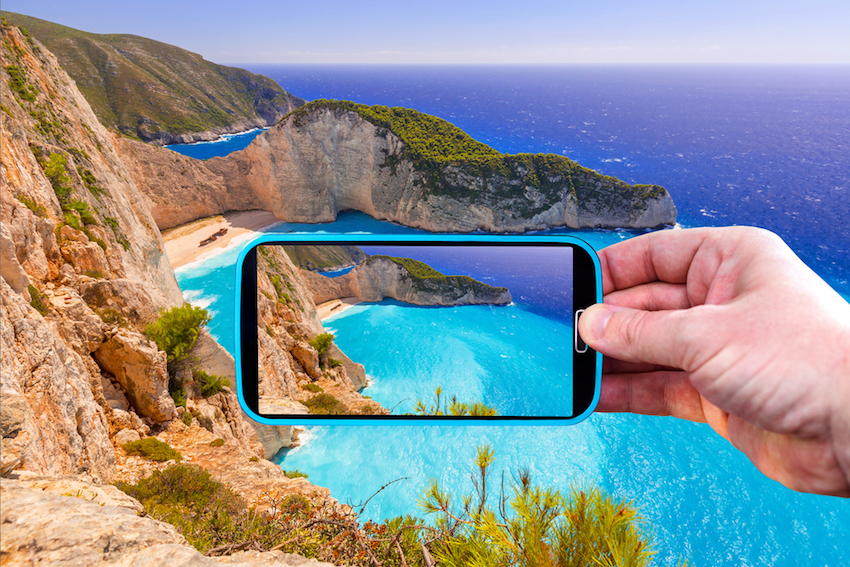 |
|
Heading west across the tip of the island, you soon reach the triple weaving centre of Volimes, divided into Kato V, Meso V and Ano V (Lower, Middle and Upper if you hadn't guessed). The middle town especially is lined with emporia selling intricately designed rugs and the like - turtles are a favourite, unsurprisingly. Even if you have no intention of buying, the displays are highly photogenic. Further southwest, a split in the road offers you the choice between getting a bird's eye view of Shipwreck Bay from an iron viewing platform that juts out from the cliff above. It's not for those with vertigo but if you do have a head for heights you will be rewarded with exactly the same shot you see in all the brochures and guidebook covers, of the turquoise sea, biscuit-coloured cliffs and golden-white sand engulfing the rusting hulk of the ship that reputedly got ran aground here in the sixties by the coastguard, who erroneously believed it had contraband aboard. Some cynics even maintain the old crate was due for the knackers yard and was deliberately placed there by the local tourist authorities in the hope it would become the attraction it has done. |
|
|
|
Further down the relentlessly rugged and mountainous western side of Zakynthos, a couple of monasteries and handful of villages stand out. The monasteries are those of Agios Georgios ton Kremnon and the more rewarding Anafonitria, which boasts some fifteenth-century frescoes, a few kilometres further south. Villages worth a peak include Orthonies, Agios Leon and, most notably Kiliomeno, home to the imposing church of Agios Nikolaos. |
|
|
|
There is precious little access to sea level on the west coast, where you can only really reach Stenitis Bay, another launchpad for boat trips to Shipwreck Bay, or Porto Limnionas further south, a small pebbly cove whose eponymous taverna serves excellent if rather pricey fish. Most coach tours of the island stop at the village of Kambi, which huddles under an enormous cross to commemorate either nationalists killed in the civil war or fighters executed by the Nazis, depending on who you talk to. Either way, the place has become quite a tourist trap, especially at sunset, and the quality of its restaurants, in particular The Cross itself, has been called into question. A far better spot for sunset viewing is at the southern end of this coast, at the Keri lighthouse, most easily accessed from the main southwest road that serves Laganas Bay. The village of Keri itself is a peaceful and attractive place to enjoy an unhurried snack or drink. |
|
|
|
Finally, back on the coast around 5km from Keri village is my personal favourite hangout on the whole island, the sweet little beach of Limni Keriou, at the southwesternmost end of Laganas Bay. Set in its own gradually curving mini-bay, it has just enough choice of restaurants and cafes to provide some variety but it's all very chilled. There are even two scuba diving operations, as it's the closest beach to the interesting dive sites of the southwestern tip of the island. Good inexpensive accommodation is available too - look no further than the two places run by the extremely friendly Bratis family, the simple yet perfectly adequate Pansion Limni and the much smarter stone Pansion Tsi Ostrias. |
 |
|
Conservation issues on Zakynthos Obviously the people of Zakynthos consider bringing in the
tourist euros more important than the plight of the turtles,
understandable since we all have to make a living. However, this is
short-sighted because those sea turtles are one of the main things that
make Zakynthos an extraordinary island. |
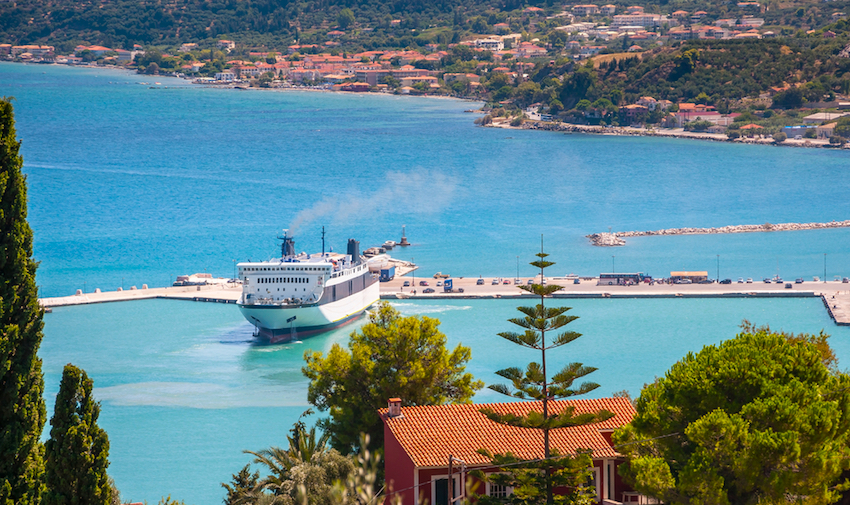 |
|
Getting to and around
Zakynthos The only other ferry connection is the service (twice daily May to October) from Agios Nikolaos (Skinari) in the north of the island to Pessada on Kefalonia. Unfortunately, the isno public bus service to either port. Since May 2018, there is finally a boat connection stopping at all the main Ionian Islands between Zakynthos and Corfu with High Speed Azimut Joy Cruises. It travels north to Corfu every Tuesday, Thursday and Saturday, having made the trip south on Monday, Wednesday and Friday. No sign of a dedicated website yet. You can find ferry schedules at Ferryhopper.com |
|
|
|
|
Recommended Hotels |
|
Alamis Hotel and Apartments is a family business located in the family-friendly Tsilivi resort. The owners and staff are always on hand providing warm hospitality and assistance. The complex includes 3 buildings: the main building features suites mostly overlooking the swimming pool, while the other two buildings feature studios and apartments overlooking the beautiful gardens and trees. Meandros Boutique & Spa hotel has been modernly designed with wall mural representations of Greek gods, combined with touches of Greek elements and minimalistic decor, creating a relaxing adult only experience. Each of the contemporary 46 spacious suites features modern facilities consisting of 11 private pool suites, 3 suites with private Jacuzzi, 11 suites and 21 premium suites with unique character. A boutique hotel that balances details from the past with playful public spaces proves that the new rules of chic are simplicity with a clean and modern sense of ease. The Diana Hotel is in a centrally position in the Venetian Square of St. Marcos next to the Catholic Church and only 200 m. from the nearest beach in Zakynthos town is ideally located for sightseeing or business. The hotel's location, its sociable ambiance, refined comforts and impeccable service make it one of the city's premier hotels. With a history dating back to 1972, Diana Hotel has undergone a rebirth and still operates under the tradition of providing quality to its customers in conjunction with competitive prices and until now has achieved to follow the dynamic tourism market of the Island. Cavo Orient Beach Hotel is located in Zakynthos at the picturesque village of Tragaki. This luxury brand new property (opening May 2018) offers contemporary, sleek architecture and design. Beautiful Mediterranean gardens lead to a private beach with crystal blue Ionian views. Guests may relax by the pool, enjoying refreshments & cocktails or dine in the elegant premises of two restaurants before enjoying the rich options of the Zante nightlife. Cavo Orient is the ideal location to discover the unparallel natural beauty of Zante and explore the rich history and culture of the island. Blue Caves Villas is a private, peaceful and romantic villa complex of 5 traditional Zakynthian stone houses, overlooking the sea, perfect for relaxing holidays with various opportunities in terms of privacy, leisure and pleasure. The abundance of opportunities for hiking, mountain biking,swimming, fishing or for the more adventurous: diving in the crystal clear sea, canoeing or exploring the mountain side, will tempt every visitor and make for unforgettable experiences. All the villas have private pools with hydo-massage, direct access to the sea and spectacular "Priest's Cave" where a monk allegedly used this cave for meditation in the old days. Surrounded by vineyards and olive groves in Agios Kirikos, the Eco Resort Zefyros is set in a quiet location amidst lush olive groves and vineyards that reflects the unique Mediterranean environment. The elegant rooms, the large outdoor pool, the bar and the restaurant, the spa and the rest of the hotel facilities together with the friendly service, make Eco Resort Zefyros an ideal accommodation choice for a summer holiday in Zante for couples and families alike. The Contessina Hotel is a 5-star hotel in in the magical Tsilivi, in a green and friendly environment. Situated just 6 km away from the town, 8 from Airport, and 200 from the sandy Tsilivi beach, it is an ideal blend of peace, convenience and comfort. Nestled in an ideally unique location, just outside the busy bar strip of Tsilivi but only 5 minutes away from the town center and all the main seaside attractions. The four star Filoxenia Hotel Zakynthos is only 3 km away from Zante town, ideally situated in one of the less busy and beautiful countryside in the island, within 1.5 km 20-30 minutes walking from Tsilivi beach and the busy resort center. Modern amenities, a sprinkling of umbrellas by the poolside, 2 swimming pools and a children's pool for the young guests. A bar and a snack bar are conveniently located for a quick thrust as you laze under the sun. Emerald Villas and Suites invite you to make your perfect vacation dream a reality. Only a few minutes away from Agios Nikolaos beach, in the area of Volimes, on the north-east side of Zakynthos Island of Greece, Emerald Villas and Suites offer you stunning sea views and marvelous moments of relaxation and privacy. Emerald Villas & Suites composed of four luxury villa & suites complexes all well situated in a quiet and still unspoiled area of Zante Island. Natura Verde Villas is a recently rebuilt and renovated complex that offers 7 villas with private pools. All villas are located among well taken care of gardens within nature offering a relaxing and memorable stay. The welcoming environment along with the modern furnishings and appliances as well as the private pools make the complex a worth visiting one! The Natura Verde is very suitable for extended families and big groups that seek a holiday destination that can accommodate them all, while at the same time they will be able to enjoy their privacy. |
|
You can find more hotels in Zakynthos on Matt's Hotels of Greece Zakynthos Page. You can also find Villas, Holiday Homes, Self-Catering Apartments and Air BnB Style Accommodations on Matt's Zakynthos Villas Page Unless you are flying direct from Europe, getting between Athens and Zakynthos can be tricky, especially if you plan to visit other islands and even more so if those other islands are not in the Ionian chain. I recommend Fantasy Travel who can book your hotels, ferries, flights and take care of all your transportation needs and make sure everything runs smoothly. See their website at www.fantasytravelofgreece.com or if you have a good idea of what you want to do use my Create-an-Itinerary Form and they can tell you whether your plan is do-able and how much it will cost to do it. |
Zakynthos Activities |
 Travel to and from Zakynthos by Helicopter!
Travel to and from Zakynthos by Helicopter!
|
|
|
Join Matt Barrett's Greece Travel Guides Group on Facebook for comments, photos and other fun stuff. If you enjoy this website please share it with your friends on Facebook. If you are appreciative of all the free information you get on my websites you can send a donation through Paypal Or you can use Venmo at venmo.com/Matt-Barrett-Greece |
 As is the case in
the rest of the Ionian archipelago, Zakynthos has quite a reputation in
the arts, especially literature. Dionysios Solomos (1798-1857), its
most famous man of words, penned the poem that became the national
anthem of Greece, Hymn To Liberty, and was a great champion of demotic
Greek. The other noted poet to hail from the island was Andreas Kalvos
(1792-1869), who preferred the purist katharevousa form of the language
for his twenty Odes. Playwright and novelist Grigoris Xenopoulos
(1867-1951) was the third literary star to rise here, his novel Red Rock
being the most revered of his works. He was also the founder and editor of the Nea Estia magazine, which is still published. He became a member of the Academy of Athens in 1931, and founded the Society of Greek Writers (Εταιρεία Ελλήνων Λογοτεχνών) together with Kostis Palamas, Angelos Sikelianos and Nikos Kazantzakis.
As is the case in
the rest of the Ionian archipelago, Zakynthos has quite a reputation in
the arts, especially literature. Dionysios Solomos (1798-1857), its
most famous man of words, penned the poem that became the national
anthem of Greece, Hymn To Liberty, and was a great champion of demotic
Greek. The other noted poet to hail from the island was Andreas Kalvos
(1792-1869), who preferred the purist katharevousa form of the language
for his twenty Odes. Playwright and novelist Grigoris Xenopoulos
(1867-1951) was the third literary star to rise here, his novel Red Rock
being the most revered of his works. He was also the founder and editor of the Nea Estia magazine, which is still published. He became a member of the Academy of Athens in 1931, and founded the Society of Greek Writers (Εταιρεία Ελλήνων Λογοτεχνών) together with Kostis Palamas, Angelos Sikelianos and Nikos Kazantzakis. The most notable and devastating event in the
island's modern history was the 7.2 Richter earthquake that decimated
both it and neighbouring Kefalonia in August 1953. Over seventy percent
of dwellings were destroyed in the quake and ensuing fires, which raged
for ten days. Mercifully, the death toll remained relatively low, at
around 200, as most people were out of doors when it struck, but
obviously the island had to be rebuilt from the bottom up, a monumental
task that required many years. Unlike on Kefalonia, however, the
Zakynthians were quite quick to turn their misfortune into an
opportunity and jumped onto the touristic bandwagon not long after Corfu
did, during the 60s, although major development did not really kick in
until the 80s.
The most notable and devastating event in the
island's modern history was the 7.2 Richter earthquake that decimated
both it and neighbouring Kefalonia in August 1953. Over seventy percent
of dwellings were destroyed in the quake and ensuing fires, which raged
for ten days. Mercifully, the death toll remained relatively low, at
around 200, as most people were out of doors when it struck, but
obviously the island had to be rebuilt from the bottom up, a monumental
task that required many years. Unlike on Kefalonia, however, the
Zakynthians were quite quick to turn their misfortune into an
opportunity and jumped onto the touristic bandwagon not long after Corfu
did, during the 60s, although major development did not really kick in
until the 80s.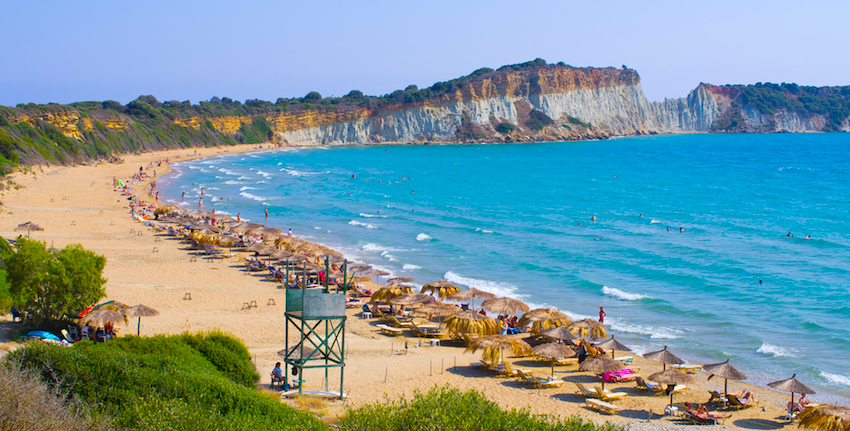

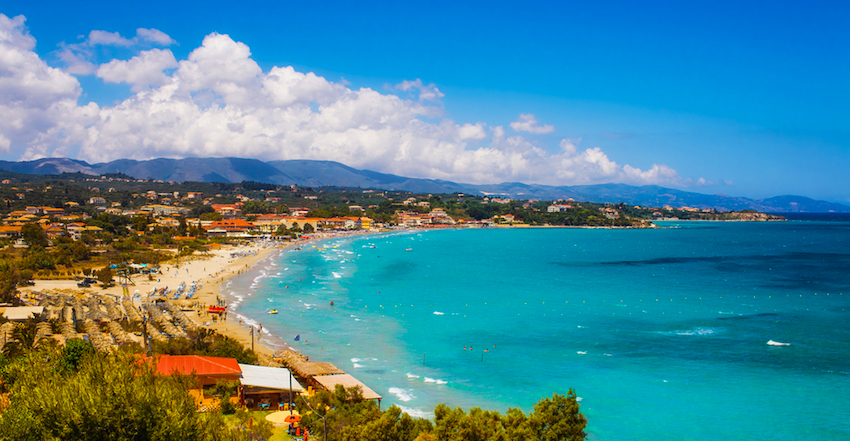
 Also well worth mentioning is Freddie's Beach Bar in Tsilivi which is considered by many to be the best beach bar on the island. It has a great location right on the beach, with sun beds and umbrellas and a nice variety of salads, mezedes, iced cold beer and mixed drinks. For those who
are fans of
Also well worth mentioning is Freddie's Beach Bar in Tsilivi which is considered by many to be the best beach bar on the island. It has a great location right on the beach, with sun beds and umbrellas and a nice variety of salads, mezedes, iced cold beer and mixed drinks. For those who
are fans of 
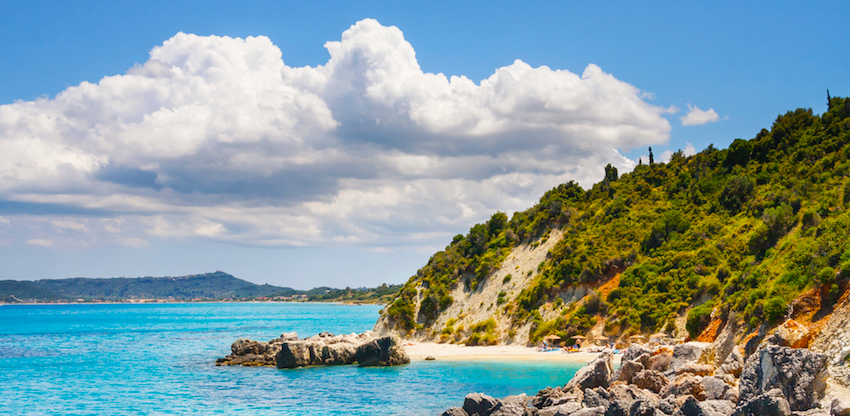
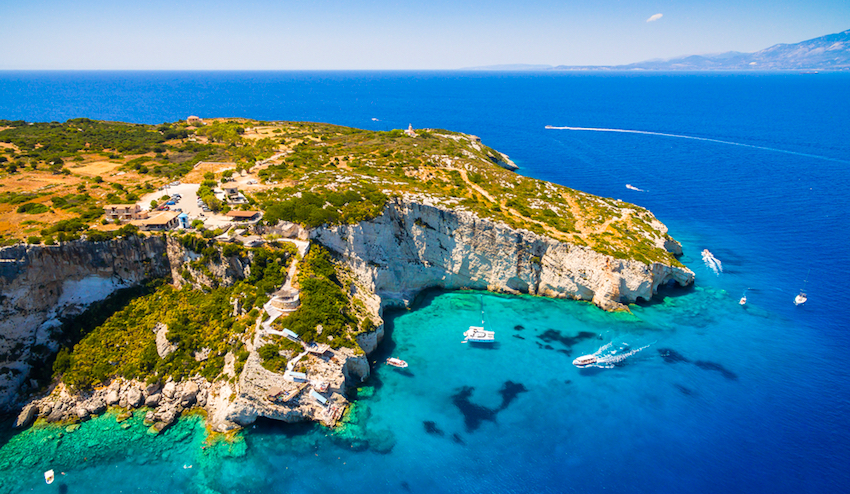

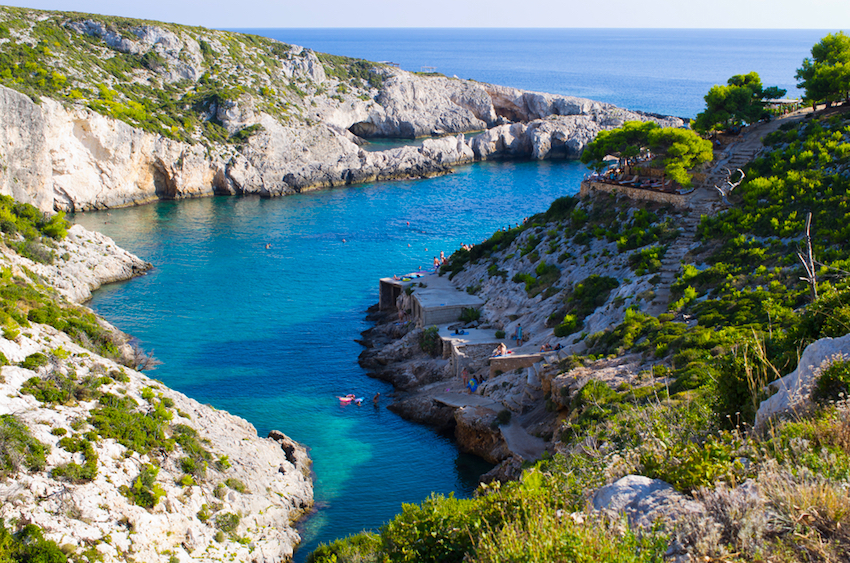
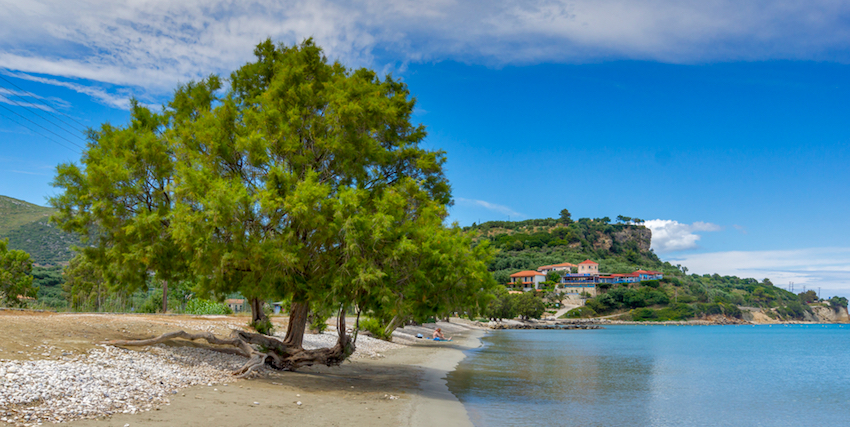
 About the author
About the author





